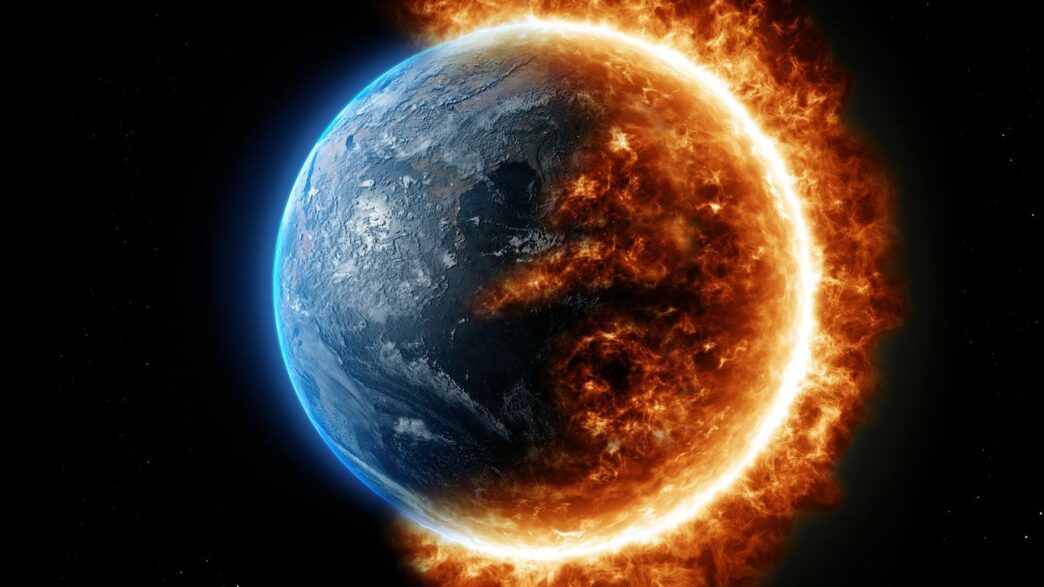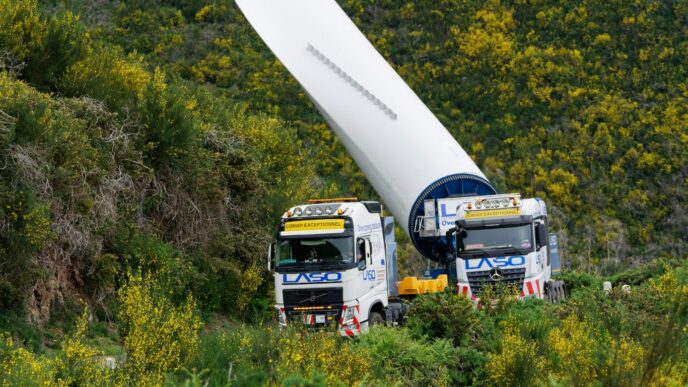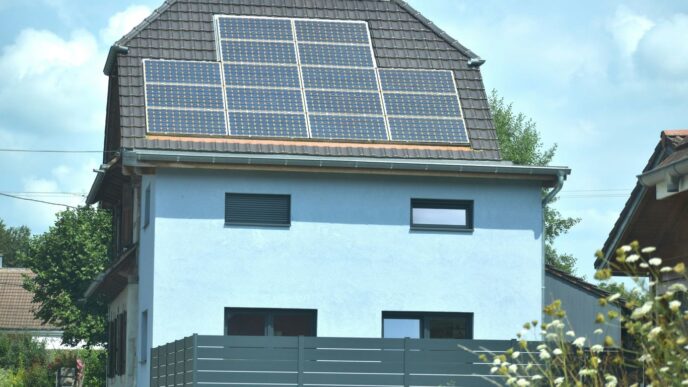So, what’s the deal with Earth in 2025? Turns out, the Sun’s been a bit active lately. We’re talking about solar storms, which are basically big bursts of energy and particles from our star. When these hit Earth, they can cause some pretty interesting effects, from amazing light shows in the sky to potential disruptions for our technology. Let’s break down what happened and what it means.
Key Takeaways
- A major solar flare and subsequent coronal mass ejections (CMEs) hit Earth on November 11, 2025, causing a severe geomagnetic storm.
- These storms can interfere with power grids, satellite communications, and GPS navigation systems.
- While disruptive to technology, these events do not pose a direct biological risk to people on Earth.
- Historically, solar storms like the Carrington Event of 1859 have caused significant disruptions, even setting telegraph lines on fire.
- Predicting the exact timing and intensity of solar storms remains challenging, but alerts help prepare for potential impacts.
Understanding Solar Storms and Geomagnetic Events
What Constitutes a Solar Storm?
So, what exactly is a solar storm? Think of it as a disturbance on the sun that sends a blast of energy and particles out into space. These aren’t like the gentle breezes we experience here on Earth. They’re powerful events driven by the sun’s magnetic activity. When these solar disturbances reach our planet, they can cause what we call geomagnetic storms. It’s like the sun is having a bit of a tantrum, and we feel the effects here.
The Difference Between Solar Flares and CMEs
When we talk about solar storms, two main players usually come up: solar flares and Coronal Mass Ejections (CMEs). They’re both caused by magnetic fields on the sun getting tangled up and then snapping. A solar flare is like a sudden flash of light, a burst of electromagnetic radiation that travels at the speed of light. It hits Earth in about eight minutes. CMEs, on the other hand, are huge clouds of gas and plasma that get ejected from the sun. These travel a bit slower, taking anywhere from 15 hours to a few days to reach us, but they carry a massive amount of material. Imagine a flare as a quick, bright flash and a CME as a big wave of stuff being thrown our way.
How Solar Storms Become Geomagnetic Storms
Not every solar storm directly impacts Earth. For a solar storm to become a geomagnetic storm, it needs to send particles and energy towards us. When these charged particles from the sun collide with Earth’s magnetic field, they cause a disturbance. This interaction is what we call a geomagnetic storm. The strength of the geomagnetic storm depends on a few things, like how fast the particles are moving and the direction of the magnetic field they carry. The more intense the solar event, the more likely it is to cause significant disruptions on Earth.
Here’s a quick rundown:
- Solar Flare: A burst of radiation, travels at light speed.
- CME: A massive cloud of plasma and particles, travels slower but carries more material.
- Geomagnetic Storm: Occurs when solar storm particles interact with Earth’s magnetic field.
The Solar Event of November 2025
So, what actually went down in November 2025? It was quite the show put on by our Sun. We saw a pretty significant solar flare, an X-class one, which is the biggest category. This happened on November 11th, around 10:04 UTC. Think of it like a massive burst of energy shooting out from the Sun’s surface. This wasn’t just a little pop; it was a big one, and it got everyone watching.
Observing the X-Class Solar Flare
This X5.1 class flare was a real attention-grabber. It came from a specific active region on the Sun, known as NOAA Active Region 14274. When these flares happen, they release a ton of radiation and charged particles. We could see shock waves rippling out from where the flare occurred on the Sun. It’s a stark reminder of the powerful forces at play way out there. The energy released is immense, and it’s the first step in a chain reaction that can affect us here on Earth.
Coronal Mass Ejections Arrive at Earth
Following that big flare, less than an hour later, we observed a Coronal Mass Ejection, or CME. Basically, it’s a huge cloud of plasma and magnetic field that gets ejected from the Sun. This particular CME was moving fast, estimated at around 1500 km/s. It took a couple of days to reach us, with initial estimates putting its arrival in the late evening of November 12th or early morning of November 13th. These CMEs are what really drive the geomagnetic storms when they interact with Earth’s magnetic field. It’s this interaction that causes most of the problems we worry about.
Severity of the Resulting Geomagnetic Storm
The CME hitting our planet triggered a severe geomagnetic storm, classified as G4. This is pretty high up on the scale, meaning it had the potential for widespread issues. While it doesn’t pose a direct danger to people’s health, it can really mess with our technology. We’re talking about potential disruptions to power grids, interference with satellite communications, and problems for GPS and radio systems. It’s a good thing space weather forecasters are getting better at predicting these events, though there’s still a lot of uncertainty about the exact timing and intensity. The European Space Agency (ESA) is keeping a close eye on these events, collecting data to help us understand and prepare for future solar outbursts. Increased solar activity is anticipated to persist into 2025, offering enhanced chances to witness the northern lights.
Impact on Earth’s Technology

So, when the Sun throws a tantrum, it’s not just pretty lights we’re talking about. Our modern world runs on electricity and signals, and these solar outbursts can really mess with that. It’s like a giant cosmic EMP, but instead of a bomb, it’s the Sun doing the disrupting.
Disruptions to Power Grids
Imagine your lights flickering, or worse, going out completely. That’s what can happen when a big solar storm hits. The charged particles from the Sun can induce currents in long power lines. These extra currents can overload transformers, the big metal boxes that step down voltage. If a transformer gets too hot, it can get damaged, and replacing them isn’t exactly a quick fix. In really bad storms, like the Carrington Event way back in 1859, telegraph systems actually caught fire. While we’ve gotten better at managing this, a severe storm in 2025 could still cause widespread blackouts.
Interference with Satellite Communications
We rely on satellites for a ton of things these days – GPS, weather forecasts, TV, internet, you name it. Solar storms can mess with these. The charged particles can fry sensitive electronics on board satellites or disrupt the signals they send and receive. This means your GPS might get wonky, or your satellite internet could drop out. Air traffic control also uses satellites and radio, so disruptions there are a serious concern.
Effects on Radio and GPS Navigation
Even if you don’t rely on satellites directly, radio communications can take a hit. Those high-energy particles from solar flares can ionize the Earth’s upper atmosphere, which is what allows shortwave radio signals to bounce around the globe. When that layer gets messed up, radio signals can get weaker or disappear altogether. GPS signals also travel through the atmosphere, and the disturbances caused by solar storms can introduce errors, making your navigation unreliable. It’s not just a minor inconvenience; it can affect everything from trucking routes to emergency services.
Historical Context of Solar Storms
The Carrington Event of 1859
Okay, so let’s talk about the big one. Back in 1859, something called the Carrington Event happened. It was a massive solar storm, the most intense one we’ve ever recorded. Think of it as the granddaddy of all solar outbursts. When it hit Earth, it caused auroras – those pretty light shows in the sky – to be seen way down south, like in Hawaii. That’s super unusual. But it wasn’t just pretty lights; it caused actual problems. Telegraph systems all over Europe and North America went haywire. Some telegraph operators even got shocked, and the paper in their machines caught fire. This event showed us just how powerful the sun can be and how it can mess with our technology, even back then.
The 1972 Solar Storm and Naval Mines
Fast forward a bit to August 1972. Another significant solar storm hit. This one didn’t cause fires, but it did cause major disruptions to electrical and communication systems in the United States. What’s really wild, though, is that this storm is believed to have accidentally set off US naval mines that were in the waters off Vietnam. Imagine that – a solar storm triggering explosions miles away. It’s a stark reminder that these events can have unexpected and serious consequences.
Recent Strong Geomagnetic Storms
We haven’t had to wait centuries for another big event. In recent years, we’ve seen some pretty strong geomagnetic storms. For instance, in November 2025, we experienced a series of events that really shook things up. We saw X-class solar flares, which are the most powerful kind, followed by coronal mass ejections (CMEs) that slammed into Earth. These CMEs triggered a G4-level geomagnetic storm, which is pretty high on the scale. A G4 storm means we can expect significant impacts on power grids, satellites, and communication systems. Officials were put on alert, and some space launches were even postponed because of it. It’s a good thing we’re getting better at spotting these things and warning people, even if predicting them perfectly is still tricky.
Predicting and Preparing for Solar Activity
So, we know solar storms can be a big deal, right? But how do we actually see them coming? It’s not like we have a weather app for the Sun. Forecasting solar storms is tricky business, and we’re still working on getting better at it.
Challenges in Solar Storm Forecasting
Scientists are always watching the Sun, looking for those big active regions that might pop off. They can tell when the Sun is getting worked up, kind of like seeing storm clouds gather. But pinpointing the exact moment a solar flare or a coronal mass ejection (CME) will happen, and just how strong it will be? That’s the tough part. It’s like trying to guess when a rubber band will snap – you know it’s under tension, but the exact second is a mystery.
Alerts and Preparations for Outbursts
Even with the challenges, there are systems in place. Agencies like the European Space Agency (ESA) run space weather services. These services keep an eye on things and send out alerts to folks who need to know, like satellite operators and power grid managers. When a big event is brewing, they can give a heads-up, sometimes just minutes or a couple of hours before it hits Earth. This gives people a chance to get ready, maybe by switching off certain parts of the power grid or making sure satellites are in a safe mode. It’s all about minimizing the damage.
Monitoring the Sun’s Active Regions
Keeping tabs on the Sun’s active areas is key. Think of it like monitoring a volcano – you watch the vents and seismic activity. For the Sun, this means using telescopes and instruments to observe flares, CMEs, and the general state of its surface. New missions are being developed to get a better view, even from different angles, to give us more warning time. For instance, future missions aim to observe the Sun from the side, giving us a heads-up much earlier than current methods that only give us about 20 minutes of notice before an impact. It’s a constant effort to improve our ability to predict and prepare for these powerful solar events.
Auroras and Visible Spectacles
So, you’ve heard about solar storms and how they can mess with our tech, but they also bring something pretty amazing to the night sky: the auroras. You know, those dancing lights, often called the Northern Lights (or Aurora Borealis) in the north and Southern Lights (Aurora Australis) down south. It’s like the sky puts on a light show, and it’s all thanks to the sun.
How Northern Lights Occur
Basically, when the sun throws a tantrum and sends out those charged particles, they don’t just hit Earth and disappear. Our planet has a magnetic field, kind of like a shield, that’s strongest up near the North and South Poles. These charged particles get guided by that magnetic field towards the poles. When they bump into the gases in our upper atmosphere – like oxygen and nitrogen – they make those gases glow. It’s a lot like how a neon sign works, but on a massive, natural scale. The colors you see depend on which gas is hit and at what altitude.
- Green: Usually from oxygen, often seen at lower altitudes.
- Red: Also from oxygen, but at higher altitudes.
- Blue/Purple: Typically from nitrogen.
Auroras Visible at Lower Latitudes
Normally, you have to be pretty far north or south to catch a good aurora show. But when we get a really strong geomagnetic storm, like the ones we’ve been seeing more of lately, those charged particles can get pushed further towards the equator. This means people in places that don’t usually see the Northern Lights might get a surprise visit. We’re talking about seeing them in states like Colorado, Illinois, or even as far south as Georgia and California. It’s a pretty wild sight when the sky lights up in areas where people aren’t used to it.
Factors Influencing Aurora Brightness
It’s not just about whether a storm is happening; a few things affect how bright and widespread the auroras will be. The timing of when those solar particles hit our atmosphere is a big one. If they arrive during daylight hours, you won’t see much, even if it’s a strong event. The intensity of the solar storm itself matters, of course. A stronger geomagnetic storm means more particles hitting our atmosphere, leading to brighter and more vibrant displays. And sometimes, the way the particles interact with Earth’s magnetic field can make the show more dynamic and colorful. The sun’s current 11-year activity cycle is peaking, which means we’re likely to see more of these spectacular displays more often and in more places than usual.
So, What’s the Takeaway on Solar Storms?
Alright, so we’ve talked about how the sun can throw some serious punches with solar flares and CMEs. The big event in November 2025 showed us just how much these space weather happenings can mess with our tech, from power grids to GPS. While it’s not like we’re going to get fried by radiation – our atmosphere does a pretty good job protecting us – it’s clear that our modern world is pretty vulnerable to these solar outbursts. Experts are working on better ways to predict these things, but for now, it’s a good reminder that even though we’re on solid ground, we’re still connected to the wildness of space. Keep an eye on the sky, and maybe have a backup plan for your phone charger.
Frequently Asked Questions
What exactly is a solar storm?
A solar storm is like a big burst of energy and stuff from the Sun. It can happen in a couple of ways: sometimes it’s a huge flash of light called a solar flare, and other times it’s a massive cloud of hot gas called a coronal mass ejection, or CME. These can travel really fast towards Earth.
How do solar storms affect Earth?
When these solar storms reach Earth, they can mess with our technology. They can cause problems for power lines, making electricity go out. They can also interfere with satellites that we use for things like GPS and phone calls, and even affect radio signals.
What is a geomagnetic storm?
A geomagnetic storm happens when a solar storm, like a CME, hits Earth’s magnetic field. Think of Earth’s magnetic field as a shield. When the solar storm slams into this shield, it causes a big disturbance, like ripples in a pond. This disturbance is what we call a geomagnetic storm.
Can solar storms be dangerous to people?
For people on Earth, solar storms aren’t directly dangerous. Our planet’s atmosphere acts like a big blanket, protecting us from the radiation. However, the storms can be dangerous for our technology, which we rely on a lot.
What are the Northern Lights and how are they related to solar storms?
The Northern Lights, also called auroras, are beautiful colorful displays in the sky. They happen when particles from the Sun, often sent out during solar storms, collide with gases in Earth’s atmosphere near the North and South Poles. Sometimes, during strong solar storms, these lights can be seen much farther away than usual.
Can scientists predict solar storms?
Predicting solar storms is tricky. Scientists can watch the Sun and see when big eruptions are happening, and they can give warnings a few days before they might reach Earth. But it’s hard to know the exact time and how strong they will be until they are closer.














